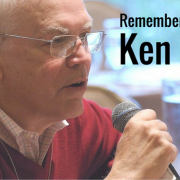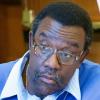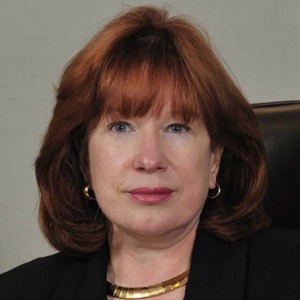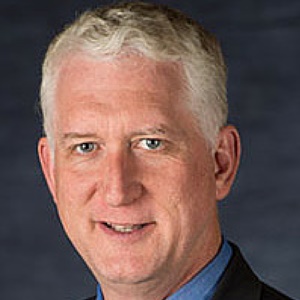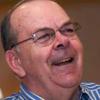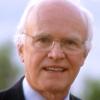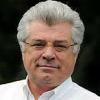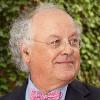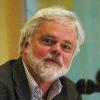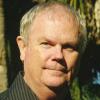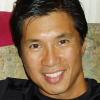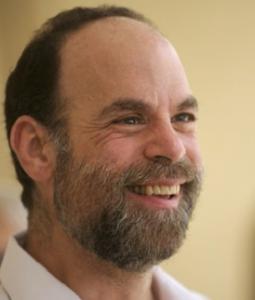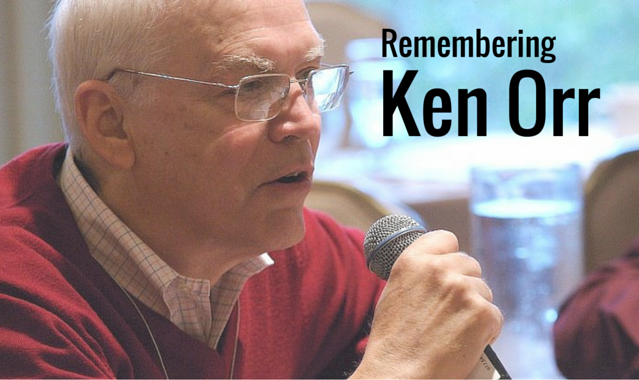
Our friend and colleague Ken Orr passed away on June 14. Ken was a true intellectual. A highly skilled technologist, Ken was a philosopher at heart, who took a genuine interest in everyone he met; he listened closely and was generous with his kind and thoughtful words. We invite you to add your stories and memories in the comments section below.
Rest in peace, Ken. We will miss you.
I had heard so much about Ken prior to meeting him. His thought leadership gave him deity status so I wasn’t sure what to expect when I went to connect in person and invite him to be part of Cutter’s Business Technology Trends Council. But there he was – tall and lanky, with a huge grin, zero pretense, welcoming warmth, wearing a baseball cap, Diet Coke in hand. As I got to know Ken, I quickly discovered that his kindness matched his wisdom in a way that is rare. As others have written, he was genuinely interested in everyone — their ideas and their lives.
Ken’s writings fill Cutter’s resource libraries — 372 Advisors, 46 in-depth Executive Reports, 24 Cutter IT Journal/Cutter Benchmark Review articles, on topics that range from EA to building mission critical software, IoT to Cloud Computing, Data Architecture to KM, social to policy issues. His contributions to the Cutter Trends Council discussions and debate, his questions at the Cutter Summit – Ken always had the observation, query, slant on a topic that the rest of us missed. His intellectual curiosity was boundless and his insights consistently original. The industry has lost a truly great thinker. Even when Ken was battling cancer last year, he still kept writing and pushing the thinking across multiple fields.
We have all also lost a wonderful friend. As word spread within Cutter’s staff, I was reminded that Ken was everyone’s favorite. Emails flew by such as these:
—Ken was such a kind man and a true gentleman. There were so many times over the years when a call from Ken would make my day. I’m especially going to miss our chats about raising girls. He was so proud of his own daughters, and he provided some perspective when I was at my wits’ end. I’m so sorry he’s gone; he won’t soon be forgotten.
—Oh goodness, that is so very hard to hear. He was always very gracious in getting his articles just right and accommodating our concerns/questions. His love of his work and industry always impressed me. In fact, I feel like I learned a lot about the industry through him. And, yes, that great smile and humor!Personally, I will always be grateful to Ken and his wonderful wife Marlene for the support they offered me when it mattered. It was Ken who wrote an eloquent tribute to my husband when he died suddenly, a piece my children still treasure. That gesture, and the content of the piece, capture so much that was essential Ken – genuine appreciation for the ideas and attributes of others. As Rob Austin remarked, I can still hear Ken’s voice and his wonderful laugh. He was boyish until the end in his enthusiasm, curiosity, and optimism. We are all better people for having known Ken. While we will miss him greatly, the example he set will remain a standard to aspire to and a beacon to guide those whose lives he brightened.
During my career in IT, I have been fortunate to cross paths with several true pioneers of the field. We lost one of these pioneers with the passing of Ken Orr. Ken was a trailblazer in the area of software engineering and structured analysis ... one of those that you KNEW had forgotten more about our field than you could ever hope to know. Yet he always brought grace and elegance to any discussion or debate; you felt like he truly cared about you and your ideas. My interactions with Ken at Cutter were energizing, insightful and mind-expanding. We all were better for being around Ken and we will miss him.
Early in my career, I was aware of Ken Orr as one of the “famous people”, with his own (ok, shared) modeling notation named after him. He spoke at conferences and wrote book on how to create systems.
Imagine my surprise when one day I got a telephone from Ken Orr. “Ken Orr? Yes, him. It turns out that he really liked my first book on data model patterns. Moreover, it turned out that he and I had a lot in common in our thinking processes. Like me, he too had studied philosophy. He recognized the philosophical basis for my data modeling efforts.
We spent many priceless hours over the years on the telephone discussing philosophy (and discussing the joys of being a grandfather). Ken sent me to the right books by Aristotle, who we both recognized was the true father of data modeling. (It was after we started our conversations that “ontology” became the world’s first 2500-year-old, hot new buzzword.)
At one point, Ken and I were working in Washington, DC at the same time. He was trying to bring some rationality to the FBI in its attempts to re-build its systems. I was trying to do the same thing at the CIA. I fear neither of us had the effect we sought, but it was a good effort and it was great to be able to share our thoughts with each other, at least. (And Ken did get me invited to do a presentation to the CIO of the FBI!)
Ken graciously wrote the Foreword to my latest book on data model patterns.
When I first learned of his cancer, I was reminded of the children I meet at the Texas Children’s hospital, where I volunteer to introduce them to Origami. Origami critters have a very positive effect in bringing smiles to children (and parents) greatly in need of them. So I sent him some models. I do hope it bought him a smile, as well.
Ken has always been a very important part of my participation in the modern world. Who’d have thought, when I was growing up, that my set of friends would be world-wide — even extending as far as Kansas! (I grew up in western Colorado, at a time when Kansas was clearly a foreign country.)
Alas, that doesn’t make them any less mortal. This is a time of great sadness to me. My condolences to Paige Orr and all of the other children and grandchildren.
I started using Warnier-Orr diagrams as soon as they came out and taught the method in my Advanced COBOL class in the early 80’s. Always wanting to meet the famous Ken Orr, I ended up on a panel with him in the late 1980’s when he was on tour with IBM and its AD/Cycle Repository rollout. Ken was a fabulous showman and could rivet an audience for an hour with a single overhead foil. Years later we ended up co-chairing a conference for a while. I will never forget the lively interchange, as well as the sharing of personal stories along the way. Thanks for the memories, Ken.
It is hard to fathom that my dear friend and wonderful colleague, Ken Orr has passed away.
To many, Ken was an icon in the structured design movement that started software development down the path to software engineering. Early programmers had no formal methods for the creation of systems. In the beginning, there were single programs. Programming itself was never simple and as the need for more complex systems became apparent, the design, documentation and testing challenges retarded progress in the use of computers and software. Ken Orr, in the US, and Jean-Dominique Warnier, in France, developed the structured diagramming technique that focused the developer’s attention on the output (data or report) of a program or system and then the required inputs before focusing on the procedural program. His was the first methodology I learned and it served me well.
I quickly advanced my career from programmer to systems analyst because I knew how to get the “requirements” documented, determine the input data and then break the functional part of the system into programmable chunks which could be assigned to programmers. The specification diagrams and documentation created using this technique allowed for more rigorous testing and verification of results.Ken Orr was instrumental in raising the standards in programming and systems design with his technique.
As the industry evolved to handle greater complexity, Ken kept pace with emerging developments. Always growing, evolving, learning and teaching, Ken was a dynamic role model for anyone who valued the growth and ongoing transformation in the computer industry. Long before I knew Ken on a personal basis, I followed his writing and teachings.
I first met Ken at a conference in the 80’s in Dallas when I worked in Software Planning for Chrysler Corporation. It was a big database conference and an exciting time. Relational database technology was emerging from the research phase and exciting the entire industry with the potential to replace existing data structures and data bases. Although Ken was in the limelight and often surrounded by the other industry luminaries, he took the time to answer my questions and took a sincere interest in my thoughts and the problems I needed to solve at Chrysler.
Later, when I had gone on to work at Xerox, Ken did some consulting for one of my peers and when we re-connected, Ken actually remembered our brief meeting from years ago.
In time, Ken recommended me to Cutter and I joined him and the rest of the Business Technology Trends Council as a Cutter Fellow. From that early impression of Ken as very smart, technically savvy but approachable and kind, I came to understand that Ken was not only brilliant, but he was also a deep thinker and a humanist. Ken deeply cared about the human condition and offered his kindness and care to his colleagues. He also consistently posed philosophical challenges that encouraged deeper thinking.
Knowing Ken was an intellectual treat and when we collaborated on articles for Cutter, I always became more knowledgeable and more humble in the presence of Ken’s enormous, expansive thought process.
I was privileged to also meet and become friends with Ken’s lovely wife Marlene. They were an awesome couple. For several years, I enjoyed their company when attending the Cutter symposiums. As inspiring as Ken was as a colleague, he and Marlene also epitomized the best in a marriage partnership. It was lovely to experience Ken’s dedication to his wife and pride in his family.
Seven years ago, when my daughter and grand children were living in Overland Park, Kansas, we all met Ken and Marlene in Lawrence, Kansas for lunch. My little, very sensitive and shy granddaughter took an instant shine to Ken and Marlene. We enjoyed lunch and a nice walk together around Lawrence. When it came time to leave, my granddaughter burst into tears. Sobbing, she said, “I don’t want him to go”. I feel exactly the same way today. Ken — you will be missed.
Many years ago, when I met Ken, he was to me one of those awesome guys who had important diagrams named after him. I expected him to be really, really tall (he was tall, but not as tall as I imagined). But he was incredibly approachable, not at all like a super tall guy with diagrams named after him. He was kind to me, chatty, kind of folksy. He had lots of stories.
His stories are one of the things I will most cherish among my memories of him. We participated on the Cutter Trends Council together, seeking out and discussing what we considered the burning trends and issues of the day. In my somewhat youthful exuberance, I would sometimes offer up an example of something I was convinced must be entirely new, because it was so amazing (to me). Thereafter, Ken would say something like "The first time I encountered something like that was about 1975, at a meeting with [some very high up execs] at [some very big and important company]." Ken was an encyclopedia of the IT world. He knew the patterns that recurred, and could show you the lineage of an important idea, it's historical evolution and impacts. It was an incredibly comprehensive perspective that amounted, after one reflected on it, to deep wisdom. Ken knew a lot and knew what it meant, and that is rare thing.
In teaching me, which he often did, though, he was gentle (when I probably did not deserve it). He never once seemed impatient, though in those discussions we ranged far and wide, and there was much fire, and energy, and delighted banter and disagreement. I loved being included in that, with my IT heroes, and certainly Ken was one of these. In my eyes, they were all wearing superhero costumes. Though I don't think I ever saw Ken stand with his hand on his hips, I can easily picture him atop a high mountain that way, with his cape blowing around him, ready to save the world.
That's the thing that I will most remember about Ken: He cared about the world, and wanted to save it. He didn't always think it was trending in a favorable direction. But he was actively working to make it better. He was an amazing human being, and great positive force in the world.
Rest in peace, Ken. We will miss you a lot.
I knew Ken Orr for some 38 years. He and I had let our contact slip the last few years but I’ve always considered him a friend, colleague, and mentor. In the late 1970’s I was a customer of Ken’s; then in the early 1980’s worked for him in Topeka for 2 ½ years — commuting from Atlanta. We continued working together in several capacities, including a long stent at Cutter. Ken was both one of the smartest and kindest people I’ve known in my work life.
Many of us who talk and write about leadership point to a clear vision as a key ingredient. However, talking about “vision” and actually creating one are two very different things. Ken may have been the best I’ve known at creating and communicating a clear vision that generated excitement in those around him. He was also adept at observing our industry — where it had been and where it was going — and articulating that for others. We didn’t always agree, but we always had great fun discussing a wide range of topics.
Ken also had great ideas — many, many great ideas. Early in my working for Ken he would pop into my office multiple times a day with just one more idea — which I would dutifully jot down. I was soon overwhelmed. I needed an “idea” strategy, so a few weeks later when he came into my office I said, “Ken, when you pop in here with new ideas I’ll jot them down. However, I don’t plan to act on any until you have popped in with the same idea 3 times.” That strategy worked for us.
Ken was one of the early pioneers in structured methodologies and software engineering — and he helped me tag along for some of the ride. Ken wrote the foreword for my first book — he was my first and only choice to write it. He profoundly impacted my career, for which I will be forever grateful. I will miss him.
It was with great sadness that I heard of the passing of Ken Orr, a friend, a gentlemen, and a scholar. I’ve known Ken personally since the early 1990s, but knew of his ground-breaking work in information technologies well before then. Ken was among the illuminati of our business, creating deep but always practical insights into how to create useful computing systems.
Ken and I shared a love of books, and would often tell each other about recent books that we found fascinating. We joked that between his book collection and mine, we could easily stock a pretty good sized library.
Ken was also forever the gentleman. He could, with his dry wit, point out some weakness in someone’s ideas or arguments, but he was never mean about it. Ken was also very quick to give praise if he found someone’s work thought-provoking, as well. In addition, Ken was always open to give advice and share his wisdom; all you had to do was ask, which I did frequently. Unlike many others in our business, Ken was very open to new ideas, and would quickly incorporate them into his own thinking – always with due credit, of course – if they proved beneficial.
I am both a better information technologist and person for having known you, Ken, for which I will forever be grateful.
I first met Ken Orr in — this is more than a little scary — 1978 when I followed him as speaker at software design conference. I was too dumb to realize at the time that following Ken is always hazardous because he didn’t just warm up an audience, he sated it. By the time I stood up to speak, eyes were unfocused as people pondered what Ken had been saying, and I felt more like a distraction than anything else.
I sent a Unix email to my colleagues that evening that Ken was a “dangerous influence” in the software world, dangerous because the approaches he was advocating were tinged with the evil of being slightly different from the ones we were advocating. I begin my tribute to Ken with this early negative assessment because the Ken Orr I came to know so well over the succeeding years would have been utterly charmed that anybody ever considered him “dangerous.” It’s something he would have added to his resume under the heading Honors Received.
We had only minutes to chat privately at that first meeting, and I came away with no real sense of the person behind his design philosophy. But in the next few years we met often and became friends. Dinner with Ken was a frequent highlight of the conference circuit in those days. We would offer fiercely competing perspectives in the session conferences and then seek out common ground over dinner. In those same years, William F. Buckley and the socialist, Norman Thomas were traveling together around the country giving debate performances at college campuses and then going out to dinner together after each debate for the pure pleasure of each other’s company. Ken and I were charmed to think of ourselves as Buckley and Thomas.
Ken quickly dispensed with the idea that he and I were competitors. He said instead that we offered slight variations of a common theme, that the design of a piece of software was something that could be perfected, that some designs were better than others, and each design could be made better and better by refinement. The methods of refinement, theirs and ours, he told me, were arrows that needed to be in the quiver of anyone who cared about design. Our competitors, he asserted, were the Mugwumps, those who believed that design was for sissies. The structure of a software product, they held, was whatever occurred to the developer as he was coding. There were some charming examples of this, software programs that seemed like allegories of something or other, complete with data names and labels that came from Genesis or from “Sargent Pepper’s Lonely Hearts Club Band” or from The Godfather.
It’s tempting to suggest that Ken’s lasting influence comes from the growing and evolving set of ideas he articulated (so beautifully) about technology and people who made it. But from my very personal perspective, this simply won’t do. Ken was about the kindest person I ever got to know. What he needs to be remembered for is kindness, a sweet smile, and irrepressible humor.
As far as I can remember, I must have met Ken for the first time in the late 1970s. I was working at Yourdon Inc. and really fascinated with software design methods. Ken was one half of the Warnier/Orr design methodology, and I needed to understand it. Little did I know then that some 35+ years later, I would remember only the basics about Warnier/Orr, but I remember all sorts of things about my friend, Ken.
I am from the Northeast of the US, so the best way I can describe Ken is he was the Will Rogers of IT, a simple easygoing country fellow as sharp as a tack, and as kind and gentle as a lamb. Will once said, “I never met a man that I didn’t like,”; same with Ken. He gave everyone he met for the first time the benefit of the doubt. He truly wanted to meet you. Only once he got to really know you did the benefit of the doubt disappear.
Ken never got old intellectually. Learning was his nutrition. He was a fearless technologist.
Ken was one half of a wonderful marriage. My wife Wendy and I really got to know Ken and Marlene when their daughter Paige was in acting school in New York, our home city. Wendy wanted to be sure that Paige knew she had local support whenever needed, and we had her over for dinner several times to help out the starving actress. Ken and Marlene would come to visit Paige, and we would get together. They were literally a couple. Wendy said they should be called, “KenandMarlene.” Partners.
Ken was at his finest in groups. He never tried to control them, but he was always a valuable contributor. His energy was contagious. He was one of the finest panelists I ever had the pleasure of listening to. Now, that is a rare talent.
The last time I talked to Ken was a phone call we had about two weeks before he died. He was in fine fettle, and really didn’t want to talk much about his condition. He wanted to talk about his family, and to hear all about mine. He had moved into an assisted living place, and Marlene had moved into a condo nearby. I asked him if he could walk over to Marlene’s place, and he answered, “Hell, I could crawl over if I have to.”
Ken, it was a delight to know you.
I was lucky enough to meet Ken Orr early in my career, so I have had many years to profit from his example.
In the mid 1970s I was absorbing everything I could find on emerging methods for structured programming. I had read some articles about Warnier-Orr diagrams in Datamation, Byte, and some ACM reports. So when, on a client visit to LA, I learned that Ken Orr himself would be speaking at some conference, I signed right up.
The room at the hotel was packed with programmers, systems analysts, and project leads. (Everybody was in a suit and tie, so none would be recognizable as technicians to a modern observer.) When Ken came to the podium, he made a dazzling impression — silver hair, elegantly worn summer suit, friendly demeanor. The image was of an approachable, well-informed, and deeply insightful observer of our industry. This was the moment that it dawned on me that there was a role in our business for folks who were not only technically competent but also humane, presentable, eloquent, and widely knowledgeable. Throughout my career, I’ve aspired to be some version of that.
Happily, I encountered Ken 30 years later at a technical review/consult at DTE Energy that Lynne Ellen had set up. As a visiting enterprise architect, I was elected to present DTE’s strategy for deploying their enterprise service bus. The meeting had two good outcomes: our EA team got very useful feedback, and I began a stint as a consultant and writer with Cutter Consortium. At Cutter, I spent more time with Ken than with any other member of the senior team.
Talking with Ken was always a learning experience for everybody involved. Ken was the archetypal life-long learner, eager to pick new concepts or new approaches (or even new bits of verbiage) out of an informed discussion or a friendly argument. We agreed on many things: for example, the value of architects keeping their “hands dirty” by staying involved in nitty-gritty project work. But we could never agree about object technology. I was (and am) a passionate advocate; Ken thought it was a bankrupt concept. We went at it many times, but the dial never moved more than a millimeter or two. Still, I always came away knowing more about…well, just about everything.
I also came away inspired by a person who stayed curious, enthusiastic, and intellectually vibrant as he grew older. In this fast-changing, young person’s industry of ours, I’ve always thought of Ken Orr as a model for aging well, a model that, these days, I refer to more and more.
More than forty years ago, Ken Orr helped me organize a University-Industry consortium for professional development of IT management and staff. I don’t recall how Ken came to my attention; somehow he was pointed out to me as a major league player in all aspects of software and application development. And boy oh boy, was he ever. This began a series of treks to Topeka and the development of a long-term relationship on intellectual, professional, and most importantly, personal levels. Personally, Ken gently and generously guided me with suggestions and positive criticisms as we contemplated next steps in consulting and research.
I mention all this by way of emphasizing Ken’s exceptional intellectual capabilities and creativity in broad areas — maybe all areas — of information technology. But even more significant, this emphasizes Ken’s willingness and enthusiasm for working with and helping others. Ken always took our calls, welcomed us to Topeka, and worked with us on projects and programs. One of my partners kept asking me why would Ken so positively and energetically work with us when we clearly were not his equal in any aspects of the field. That was Ken: ebullient, even, in sharing what he knew and what he believed.
On a personal level, I’ll miss our extended conversations on any and all topics of the day. And we all will miss his kind and generous personality. There was, there is, no one quite like him … and he already is greatly missed.
As a young man, I read Ken Orr’s writings from afar and considered him a great figure and a pioneer — almost recessed into a distant and legendary status. In a way, Ken, and a few others here at Cutter, were my tutors and mentors, speaking from within the pages of their prose, encouraging deeper thinking, better designs and better futures. All this would change for me soon enough. I had the joy of meeting Ken personally a few years back, interacting with him and writing alongside him here at Cutter. However, Ken’s outstanding and luminary accomplishments come in second place to his genuine kindness, humanity and the concern he expressed for others that I surely sensed each time we met. This was his greatest gift, I think. A great soul has left us.
I wanted to take a few minutes and jot down a few remembrances of Ken to celebrate his life. I'll have to limit myself to a few minutes, because if I don't, I could go on for hours.
I met Ken in 1975 when I was a sophomore at Washburn University of Topeka working as a programmer and tutor for the computing center at the University. Homer Sykes Jr., a friend of Ken's and the head of the computing center, introduced us. Back then, Ken was in charge of the Advanced Systems Division of Langston Kitch & Associates, a Wichita service bureau (Ken was the Advanced Systems division back then). We hit it off immediately, and as I was still in college, my first association with him was as an intern in the spring. When that worked out well, I went to work for Ken after the internship concluded.
Ken and I worked together on and off for more than 25 years, developing one of the first formal systems development methodologies: Data Structured Systems Development (DSSD) and conducting seminars on quality software development across North America. As the methodology business wound down in the late 1980's we transitioned more into management consulting, data warehousing, and eventually did a fair bit of work on the Y2K issue (remember that?). Along the way, we wrote lots of articles together, developed and conducted hundreds of seminars, and had a lot of wonderful times, as well as some less wonderful ones. One that stands out to this day is when we cleaned out the building that would become our offices across the tracks in Topeka; we must have shoveled out a thousand half-pint bourbon bottles from the room that would eventually become Ken's office.
Although I haven't worked with Ken for 15 years, we remained in contact in the past few years. Last year, near the 40th anniversary of our first meeting, I got a chance to visit with him when I was back in Kansas. He was battling the cancer that eventually claimed his life, but was in good spirits. We had lunch at the cafeteria in the Topeka library (Ken's choice when I asked him where he wanted to go for lunch), then went to Barnes & Noble to shop for books. Those of you who knew Ken know that he was a voracious reader, and that last visit was completely in character for him. I'm pretty sure he even drank a Diet Coke.
I was so fortunate to have known and worked with Ken over the years. He was a great friend and wonderful career mentor. I am grateful for the time we got to spend together. I would like to extend my deepest sympathies to his wife, Marlene, and his girls Katy and Paige for their loss.
Ken: thanks for everything.
"I don’t quite believe in nations very much. What I really believe in are families, communities, villages and tribes.” — Ken Orr
When Ken spoke that phrase while we were panelists during a Cutter Summit conference years ago, I remember furiously scribbling it down. Its elegance and simplicity along with the feeling in the words, struck me like a lightning bolt. That’s what it was like being in Ken’s presence, elegant simplicity, quiet wisdom, spoken in a prose that embodied the very essence of an idea — that few people can express with such grace.
Ken was a dear elder of our Cutter tribe. Whenever we’d greet each other, that great big smile would light up, his eyes would literally twinkle, and it felt exactly like seeing family again.
Sure, he was smart. We shared a passion for physics, mathematics and software engineering methods, but our most meaningful exchanges often gravitated to philosophy, relationships, and human behavior. While I loved our mind-sharpening exchanges on technology topics, whether in person or on the phone, our talks would often lead into life stories about his wife Marlene, daughter Paige, and his love of being a grandfather. He positively glowed when he talked about family, and the spark in his eyes embodied an eternal youth and enthusiasm.
He was the classic gentleman, and so down-to-earth.
Before meeting Ken, I had preconceived notions that anyone with a technical diagramming method named after him, as well as his own “Ken Orr Institute” had to be a guy with a big ego. But Ken was humble and egoless, as I believed true thought leaders ought to be. Recently, one of my generation gave a keynote address at a conference where I also shared past keynote duties. An observer remarked, “So-and-so’s talk was interesting, but I wasn’t impressed — because he's such an assh*le and everyone knows it.” Today's younger thought leaders seem to have a lot to learn. In contrast it makes those wiser elders of the tribe that much more special. (Note: One of my favorite books is one that Ken once gleefully recommended to me, entitled “The No Asshole Rule” by Robert Sutton.)
Those hallowed elders who have passed, like Peter O’Farrell, and more recently, Ed Yourdon, leave a great absence in their wake. The world is not the same. When Peter passed away years ago, I posted the tribute Ken wrote in honor of Peter on my website. Ken said:
"True knowledge, I have come to believe, only exists in the minds of people. What is written down or captured on audio or video tape are only knowledge artifacts. The knowledge in the minds of living, breathing people is not static or finished. So when great minds are gone, there is a tear in the fabric of the world. Peter’s loss leaves such a tear, not only in the fabric of the world, but in the lives of all those who knew and loved him.”
Ken’s loss also leaves such a tear in the fabric of the world. He will be greatly missed, but the legacy of his kindness, his humanity, and his heart lives on inside the hearts and minds of those lucky enough to have known him. See you again someday, Ken. Keep on smiling.
It was the suggestion of my dear friend, Lynne Ellen, that introduced me to Ken Orr in 1995. I knew of Ken’s reputation — but who didn’t — and wondered if there was enough room in the budget to hire a person of such distinction as a consultant. Lynne and I were both employed at Xerox Corporation at the time and involved in a large, gnarly, multi–national project that had the classic trifecta of challenges: unstable requirements, unproven technology, and politically motivated decision-making. Let it suffice that the workplace for project participants ranged from excruciatingly stressful to toxic. The area of focus for Ken’s assignment is almost immaterial, but what stood out to me was his kind, calm, and almost Zen-like demeanor in the face of the swirling storm. His unflappability was steeped in decades of experience with projects that shared a similar profile.
Ken was a story-teller. He imparted his wisdom through anecdotes, country aphorisms, parables, metaphors, and occasional references to Greek classics. He was the ultimate Renaissance man — the breadth of his knowledge, interests, and curiosity knew no limits that I could discern. There were times in those early days when I listened to Ken and struggled to understand his true meaning. I thought of him much like the Oracle at Delphi — full of rich information and yet surprisingly cryptic. It took a few beats before I would understand the rhythm of his style — he was not a teacher of facts. Instead, Ken would frame discussions and work with me to explore various dimensions of the problem space. It was a richly rewarding experience that culminated with warm hugs and an autographed copy of The Dilbert Principle, which remains almost like a reference book for when times seem most harrowing.
Several years later, at a different company, I invited Ken to consult on a vexing set of organizational problems. This time, he would be partnered with our vice president of software development. Before Ken arrived, I explained to his would-be partner that Ken was unlike any expert he had ever met. He would need to think hard and find meaning in the wonderful stories Ken recounted. After one week, I received feedback from the VP. His reaction was: Wow, this guy is really smart and very deep. The stories he tells are really valuable and illuminating. Can we extend his contract?
After a time, I was invited to join the Cutter Business Technology Trends Council and had the good fortune to spar with Ken and the rest of the Council members on a regular basis. Ken was always equipped with thoughtful opinions on any and every topic along with stories that were both terrific and relevant. His knowledge of our industry was truly encyclopedic, but this knowledge was made so easily approachable by how he chose to share his gifts; Ken did so with enthusiasm, charm, grace, kindness, and humility. He was the ultimate voice of experience who never lectured but always taught.
Rest in peace Ken. You will live vibrantly in my memory and you will certainly be missed.
Every industry has its pioneers and thought leaders. If it’s a young industry like computer science, you might be lucky enough to know the contribution these pioneers made, or perhaps to even meet one of them. And, if you’re really really lucky, you may get to actually work with one of them. Ken Orr was such a pioneer, thought leader, gentleman, friend and mentor.
Always inquisitive, looking for a better way, and drawing from a breath of knowledge and interests, Warnier-Orr diagrams were his first contribution to structured analysis and data driven design. But he didn’t stop there, always learning, thinking, improving, or teaching. I met Ken many years later when we taught classes together on Enterprise Architecture. I soon learned how much more there was to know, how to use history to explain the present, the value of a good story, the importance of credibility and humility, and that in fact, nice guys don’t finish last. I’ll be forever grateful for his friendship, kindness, knowledge and wisdom. Thanks Ken…in peace!


